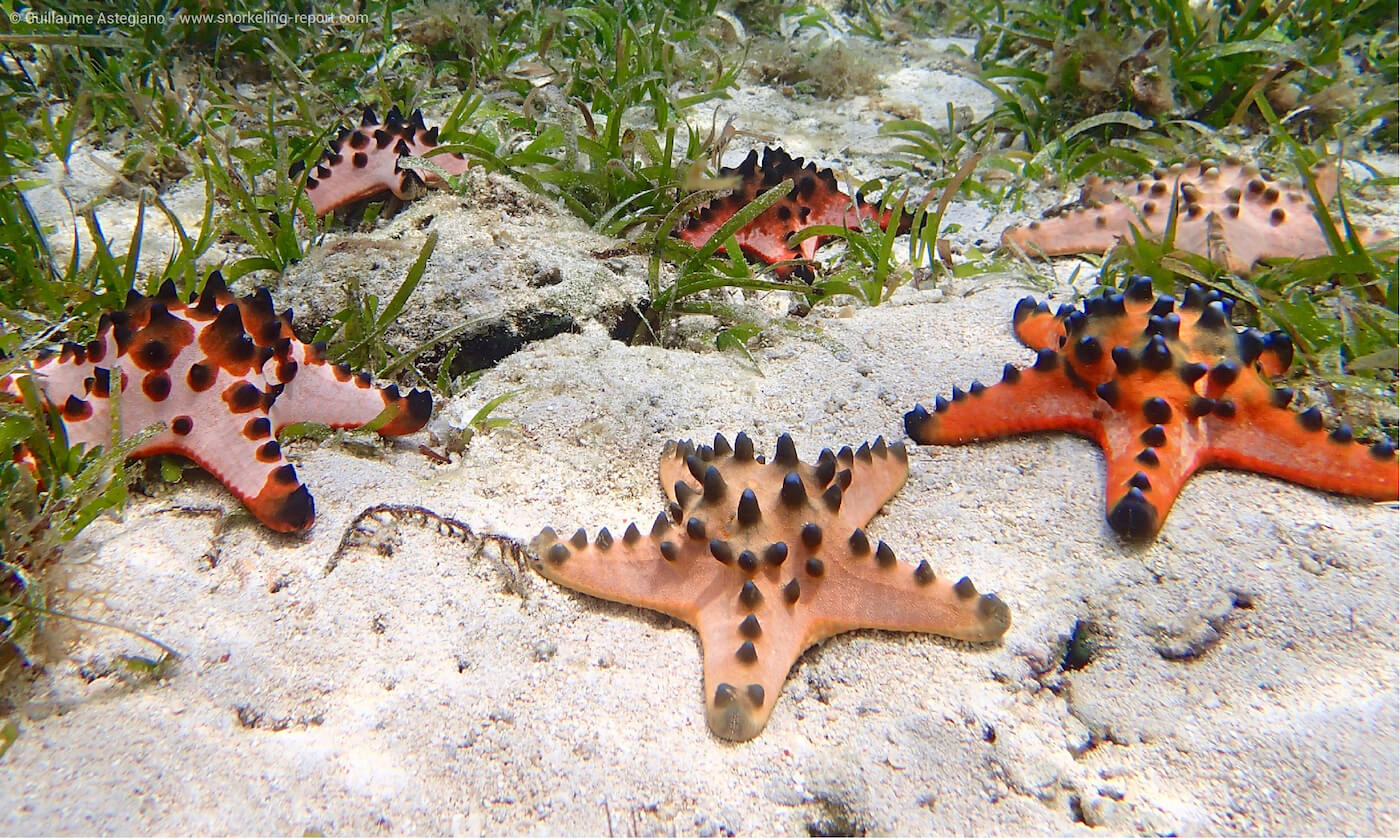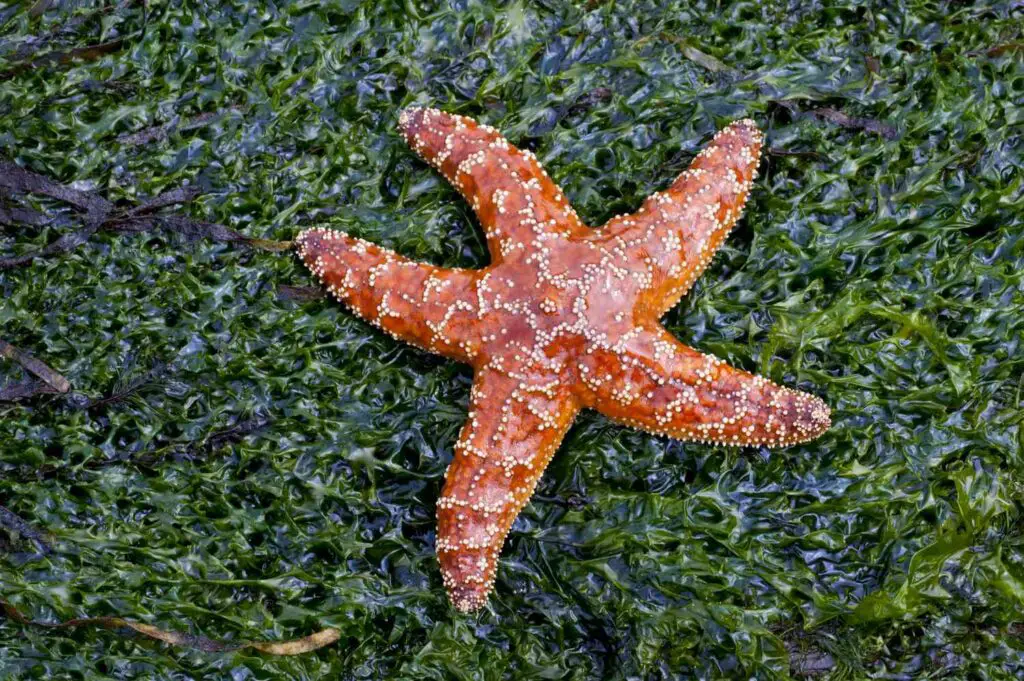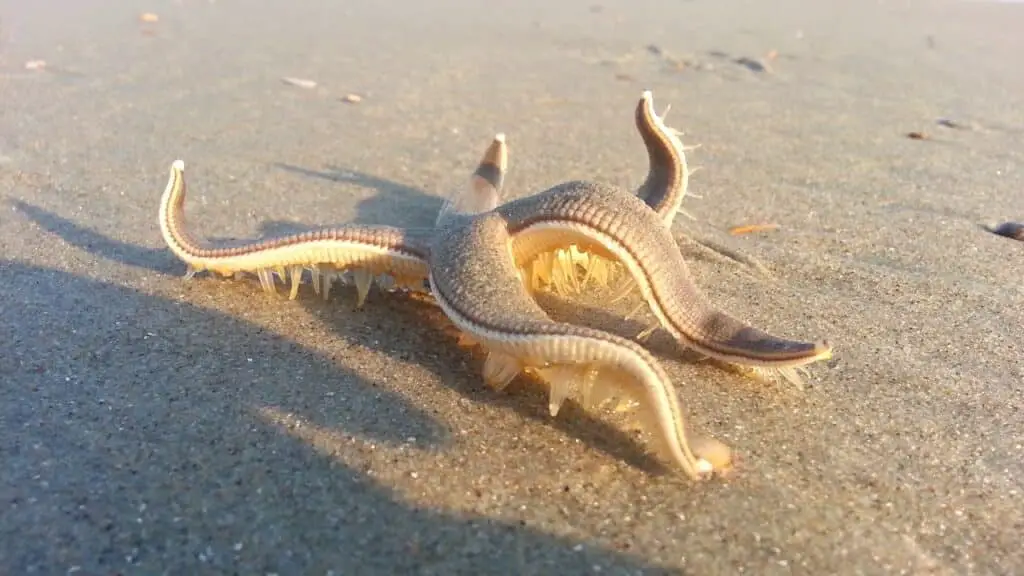How To Find Starfish

Introduction
How To Find Starfish: Exploring the world beneath the waves is a mesmerizing adventure that unveils a hidden realm of stunning marine life. Among the many fascinating creatures that inhabit the ocean’s depths, starfish stand out as enchanting, otherworldly beings. With their vibrant colors and unique shapes, starfish have captivated the imaginations of nature enthusiasts and marine biologists alike.
In this guide, we will embark on a journey to discover the secrets of locating these enigmatic sea stars. Starfish live, also known as sea stars, belong to the class Asteroidea and come in various sizes and colors. They can be found in oceans worldwide, from tropical reefs to cold, rocky coastlines. Despite their name, starfish are not actually fish; they are echinoderms, relatives of sea urchins and sea cucumbers.
Our exploration will take us from understanding the biology and behavior of starfish to practical tips on where and how to encounter them. Whether you’re an avid beachcomber, snorkeler, or scuba diver, this guide will equip you with the knowledge needed to spot these celestial creatures amidst the ocean’s depths. So, let’s dive in and unlock the secrets of how to find starfish and appreciate the beauty of the marine world in a whole new light.

Where is the best place to find a starfish?
Starfish like underwater rocky areas. They hide under rocks from predators and catch their prey. If I can’t find starfish at the beach, I snorkel the east and west jetties in Destin, Florida.
The quest to find a starfish can be a rewarding and enchanting endeavor, but it greatly depends on the specific type of starfish you’re seeking and your geographical location. Different species of starfish inhabit diverse marine environments, so pinpointing the best place to find them requires some knowledge and planning.
- Tropical Coral Reefs: If you’re looking for vibrant and diverse species of starfish, tropical coral reefs in places like the Great Barrier Reef in Australia, the Maldives, or the Caribbean are excellent choices. These ecosystems teem with a variety of marine life, including colorful starfish.
- Tidal Pools: In coastal regions with rocky shores, exploring tidal pools during low tide can be a fruitful endeavor. These pools often harbor a range of marine life, including starfish.
- Kelp Forests: Along the west coast of North America, particularly in places like California and British Columbia, kelp forests are home to the iconic sunflower starfish and other species.
- Cold-Water Coastlines: In colder regions like the Pacific Northwest of North America and northern Europe, rocky coastlines and intertidal zones can yield encounters with hardy, cold-water starfish species.
- Aquariums and Marine Centers: For a guaranteed starfish encounter, consider visiting a well-maintained public aquarium or marine education center. These facilities often have touch tanks where you can get up close and personal with starfish.
Remember to prioritize responsible and eco-friendly practices while searching for starfish to ensure the preservation of these incredible creatures and their habitats. Always be mindful of local regulations and conservation efforts, as some areas may have restrictions on collecting or disturbing marine life.
Is it easy to find starfish?
Since sea stars live in all the oceans on the planet, it is fairly easy to include sea star viewing on your beach trip. These animals only thrive in sea water and generally prefer rocky areas that allow them to cling to rocks just below sea level.
Finding starfish in their natural habitat can be both an exciting and challenging endeavor, depending on various factors. Here are some key considerations that affect the ease of finding starfish:
- Location: The ease of finding starfish largely depends on where you are. If you’re in a region with abundant marine life and suitable habitats like coral reefs or tidal pools, you’ll have a better chance of spotting them.
- Habitat: Starfish inhabit diverse marine environments, from rocky coastlines to sandy seabeds, and they often blend in with their surroundings. Understanding the preferred habitats of specific starfish species can significantly improve your chances of finding them.
- Season and Tides: The time of year and tidal conditions can influence starfish sightings. Low tide periods can reveal starfish in shallow tidal pools, while some species may be more active during certain seasons.
- Species: There are over 2,000 species of starfish worldwide, each with its own habitat preferences and behaviors. Some species are more cryptic and challenging to find due to their smaller size or specific habitat requirements.
- Experience and Knowledge: A seasoned marine enthusiast or biologist with knowledge of starfish behavior and habitats will likely have an easier time finding them than a novice.
- Conservation Efforts: In some areas, starfish populations have been affected by environmental changes and diseases, making them less common. Conservation efforts may influence their abundance.
Is it OK to touch starfish?
You should never touch or remove a starfish from the water, as this could lead to them suffocating. “Sunscreen or the oil on our skin can harm sea creatures which is another reason not to touch them.”
It is generally considered acceptable to touch starfish, but it should be done with care and respect for these fascinating marine creatures. Starfish have a tough outer skin that provides them with protection, but it is still possible to inadvertently harm them if handled too roughly. When touching a starfish, it is crucial to do so gently and avoid lifting them out of the water.
It is advisable to wet your hands before touching a starfish to avoid removing their protective mucus layer, which helps them retain moisture and fend off potential pathogens. It’s important to remember that starfish are living organisms and should be treated with the same consideration as any other animal.
Additionally, some species of starfish have tiny, tube-like feet on their underside that aid in their movement. Care should be taken not to disrupt or damage these delicate structures. Always handle starfish with clean hands and be aware of the environment you find them in, as they are an integral part of their ecosystem.
Ultimately, while it is generally permissible to touch starfish, it is crucial to do so with a gentle touch, respect for their natural habitat, and a mindful awareness of their biology and needs. This way, we can appreciate these remarkable creatures without causing them any harm.
Is finding a starfish good luck?
Starfish Symbolic Meanings
This captivating sea creature has long been associated with good luck, fortune, regeneration, and renewal by many cultures around the world.
Finding a starfish is often considered a symbol of good luck and positive omens in various cultures around the world. This belief is rooted in the starfish’s association with the natural world and its unique characteristics.
In many coastal communities, discovering a starfish is seen as a sign of good fortune, particularly for fishermen and sailors. It is believed to signify a fruitful and bountiful catch, ensuring prosperity and abundance. The starfish’s five arms are also seen as representative of balance and harmony, further reinforcing its association with positive energies.
Moreover, starfish are resilient creatures known for their ability to regenerate lost limbs, which is seen as a symbol of renewal and transformation. This quality has led to the belief that encountering a starfish can bring about positive changes and new beginnings in one’s life.
In some cultures, starfish are also linked to celestial symbolism, with their radial symmetry mirroring the shape of stars. This connection to the cosmos further enhances the perception of starfish as bringers of good luck.
While these beliefs are rooted in folklore and cultural traditions, finding a starfish continues to be a cherished and auspicious event for many, serving as a reminder of the beauty and mysteries of the natural world.
Do starfish live in every ocean?
Sea stars live in salt water and are found in all of the world’s oceans, from warm, tropical waters to the cold seafloor.
Starfish, also known as sea stars, are remarkably adaptable creatures that can be found in almost every ocean around the world. They thrive in a wide range of marine habitats, from the shallow coastal waters to the depths of the abyssal zone.
These resilient animals inhabit the Atlantic, Pacific, Indian, and Arctic Oceans, showcasing their impressive global distribution. Some species are even specifically adapted to survive in extreme conditions, such as deep-sea hydrothermal vents and polar regions. In these environments, starfish have evolved unique physiological features to cope with the challenges posed by high pressures, low temperatures, and nutrient-poor conditions.
However, it’s worth noting that while starfish are highly diverse and widespread, they are not typically found in freshwater environments. They are primarily saltwater creatures, which means they do not inhabit lakes, rivers, or other freshwater bodies.
Overall, starfish’s ability to thrive in diverse oceanic conditions exemplifies their remarkable adaptability and ecological versatility. This broad distribution serves as a testament to their evolutionary success and their vital role in marine ecosystems worldwide.
What time of day is best for starfish spotting?
The best time of day for starfish spotting is typically during low tide, specifically during the early morning hours or late afternoon. Starfish are marine animals that often inhabit intertidal zones, which are the areas along the shoreline that are alternately covered and uncovered by the ocean as the tide rises and falls.
Early morning is an excellent time to spot starfish because the tide is usually at its lowest point. As the sun rises, it provides ample light for observation, making it easier to see these fascinating creatures clinging to rocks, exposed in tidal pools, or slowly moving across the sandy ocean floor.
Late afternoon is another favorable time for starfish spotting, as the tide begins to recede again. The diminishing water levels reveal more starfish and other intertidal creatures as they become exposed to the air.
Keep in mind that the best time for starfish spotting can vary depending on the location and the specific tidal patterns of the area you’re visiting. It’s always a good idea to check local tide charts or consult with experts at marine biology centers to ensure you time your starfish-hunting adventures for the optimal experience.
Do I need any special equipment to find starfish?
As they are often visible in their natural habitats during low tide. However, a few basic items can enhance your starfish spotting experience:
- Tide Chart: Before heading out, check a local tide chart or app to know when low tide occurs in the area you plan to visit. This information will help you time your expedition for when starfish are more likely to be exposed.
- Footwear: Sturdy footwear with good traction is essential for walking on rocky or slippery intertidal areas. Water shoes or rubber boots are ideal to protect your feet and provide grip.
- Sunscreen and Hat: If you’re starfish spotting on a sunny day, sun protection is crucial. Apply sunscreen and wear a hat to shield yourself from harmful UV rays.
- Container or Bucket: It can be helpful to have a small container or bucket to gently pick up and observe starfish without harming them. Make sure to return them to their original location afterward.
- Camera or Binoculars: Bringing a camera or binoculars can enhance your experience by allowing you to capture close-up shots or observe starfish from a distance.
- Field Guide or App: Consider bringing a marine life field guide or using a mobile app that helps identify different species of starfish and other intertidal creatures you may encounter.
What should I look for when searching for starfish?
When searching for starfish, there are several key factors to consider to ensure a successful and enjoyable experience. First and foremost, it’s essential to choose the right location. Starfish are typically found in coastal areas, particularly in rocky tide pools, sandy shores, and shallow waters. Researching the best spots in your region or the destination you plan to visit is crucial.
Timing is also crucial. Starfish are often more active during low tide when they are exposed on the shore. Therefore, plan your search during these periods to maximize your chances of spotting them. Be mindful of the local tide schedules, as they can vary significantly from one place to another.
In terms of equipment, a pair of sturdy, waterproof shoes or boots is a must, especially if you’ll be exploring tide pools or rocky terrain. Additionally, bring a bucket or container filled with seawater to temporarily house any starfish you find before gently returning them to their natural habitat. Remember to handle starfish with care to avoid stressing or injuring them.
Lastly, a keen eye and patience are essential. Starfish can blend into their surroundings, so look for their distinct shapes and colors, and be prepared to spend some time exploring and observing to increase your chances of encountering these fascinating marine creatures.

Conclusion
In the world of marine exploration, finding starfish adds a touch of wonder to our underwater adventures. This guide has illuminated the path to uncovering these captivating sea stars, shedding light on their unique biology, habits, and habitats. Armed with this knowledge, we can embark on aquatic journeys with a renewed sense of curiosity and appreciation for the beauty of the ocean.
They are living symbols of the incredible diversity and resilience of marine life. From tropical coral reefs to frigid coastal waters, starfish grace a multitude of environments, reminding us of the intricate web of life that thrives beneath the surface.
Whether you’re a beachcomber scouring the shorelines, a snorkeler gently gliding through shallow waters, or a scuba diver delving into the depths, encountering starfish offers a profound connection with the underwater world. Each starfish you encounter becomes a piece of a larger narrative, a testament to the ocean’s capacity to surprise and inspire.
So, as you embark on your own underwater journeys in search of these celestial beings, remember that the quest to find starfish is not just about the destination but the journey itself—an exploration of the mysteries and marvels hidden beneath the waves, waiting to be discovered by those willing to take the plunge.



